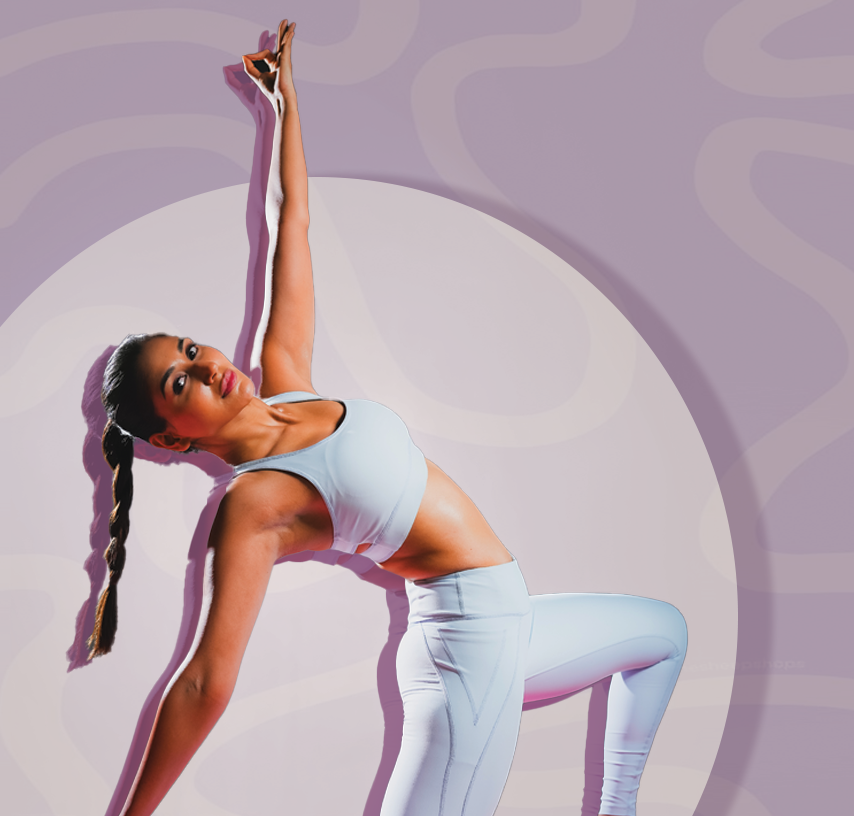be it seasoned yoga practitioners or fitness freaks, the majority of people are aware of the wonderful effects of kapalbhati pranayama. we have all spent our entire lives hearing about "kapalbhati karne ke fayde" from our elders. when frequently performed, the potent breathing method known as kapalbhati yoga can have tremendous positive effects on both the body and the mind.
this routine can aid with digestion, lung capacity, circulation, stress reduction, and anxiety reduction. however, to minimize any potential hazards or difficulties, kapal bhati should be performed with caution and under the supervision of a certified yoga instructor.
what is kapalbhati yoga?
traditional hatha yoga is thought to be incomplete without kapalbhati yoga. through stimulating the respiratory and digestive systems, enhancing circulation, and soothing the mind, this practice aims to purify and rejuvenate the body. for those who regularly practice it, kapalbhati yoga is a potent method that can have tremendous positive effects on both their physical and mental health.
kapal meaning in hindi is ‘forehead’ while ‘bhati’ means shining or gleaming.. the terms "kapal" and "bhati," are combined to form the word "kapalbhati." forceful exhalations are used in this technique, which is supposed to clear the cranium and make the mind feel clear and light. this exercise is also called as "skull-shining breath" or "breath of fire" because to the rapid and strong exhales.
who can do kapalbhati yoga?
exhalations made quickly and vigorously through the nose during kapalbhati yoga can stimulate the digestive and respiratory systems, boost circulation, and soothe the mind. while most people can benefit from this practice, it's crucial to know who can engage in kapalbhati yoga and who should stay away from it.
kapalbhati yoga is open to anyone who is in excellent health and does not have any illnesses that could be made worse by rapid breathing. but, if you are new to yoga or have never used this breathing technique previously, it is equally important to undertake this practice carefully and with caution.
before starting your practice, speak with your doctor or a certified yoga instructor if you're not sure kapalbhati yoga is a good fit for you.
who should avoid doing kapalbhati yoga?
while most people can benefit from kapalabhati pranayama practice, some persons should stay away from it due to its potential complications and difficulties.
-
kapalbhati yoga should be avoided by anyone with cardiovascular diseases like heart ailments or high blood pressure since the forceful exhalations can result in a fast rise in blood pressure, which could be problematic for people with pre-existing cardiovascular issues. also, those who have just had cardiac surgery should not engage in this yoga practice.
-
kapalbhati yoga should also not be practised by pregnant people or the ones on their menstruation. strong exhalations during pregnancy or menstruation may put pressure on the abdomen and pelvis, which may be uncomfortable or even dangerous.
-
those with respiratory conditions such as asthma or chronic obstructive pulmonary disease (copd) should either avoid practicing kapalbhati yoga altogether or perform it carefully. those with respiratory diseases may find it challenging to perform this technique, even if it is beneficial for the respiratory system, especially if they are experiencing an acute episode.
-
anybody with a history of hernias, ulcers, or other abdominal conditions should also stay away from kapalbhati yoga unless they practice under the guidance of a licensed yoga instructor. the pressure of the strong exhalations on the abdomen can aggravate these problems.
beginners who have never practiced kapalbhati yoga or other forms of yoga should begin gently and gradually. it's important to listen to your body and avoid pushing yourself over your limits, especially if you're in pain or uncomfortable.
kapalbhati procedure step by step
for millennia, yoga and ayurveda have used the breathing practice kapalbhati to advance health and well-being. rapid, strong exhalations via the nostrils used in this effective breathing technique are supposed to clear the head and improve mental clarity. through these simple kapalbhati steps, you don’t have to worry about ‘kapalbhati kaise kare’ anymore. these steps will tell you each phase of kapalbhati in great detail.
step 1: choose a comfortable seat
choose a comfortable seated position to start. with your back straight and your feet flat on the ground, you can sit in a chair or on a yoga mat. with your palms facing up, place your hands on your knees or thighs.
step 2: inhale deeply a few times.
breathe in deeply through your nose for a few breaths, then let out through your mouth. this will assist in getting your body and mind ready for the kapalbhati practice.
step 3: take a deep breath
breathe in through your nose and let the air fill your lungs.<
step 4: forcefully exhale
pull your belly button in toward your spine as you aggressively exhale through your nostrils. the exhale need to be rapid and abrupt, like a burst of air.
step 5: continue
rapidly repeat steps 3 and 4, concentrating on the exhalation. the fast exhales should cause the passive and automatic inhale to happen.
step 6: establish a beat
for your kapalbhati practice, establish a rhythm by taking long, deep breaths and forcing them out quickly for a predetermined number of cycles or minutes. for starters, 10–20 repetitions may be started, and the number may be gradually increased over time.
step 7: do the exercise
take a few long, deep breaths and exhale through your mouth to close out the exercise. in order for the results of the practice to take effect, take a moment to acknowledge how you are feeling and then sit quietly for a while.
now that you know how to do kapalbhati steps, it is time for you to practice this regularly, safely and effectively. remember to start this exercise slowly and cautiously if you are new to yoga or have never utilized this breathing method. with frequent practice, kapalbhati can improve respiration and digestion, increase circulation, and quiet the mind.
kapalbhati pranayama benefits
you must have read kapalbhati benefits in hindi or english. if you haven’t already, we have got you covered. many advantages of kapalbhati pranayama have been discovered, from improved digestion to stress reduction. you can even reap 30 min kapalbhati benefits if you have less time in your routine. some of its major benefits are:
-
enhances respiratory performance
forceful exhalations through the nose are a part of the kapalbhati pranayama, which serves to strengthen the respiratory muscles and expand the lung capacity. the regular practice of kapalbhati pranayama helps enhance respiratory function and relieve respiratory conditions like allergies, asthma, and bronchitis.
-
enhances digestion
the practice of kapalbhati pranayama is thought to boost metabolism and stimulate the digestive system. by working the abdominal muscles, the kapalbhati pranayama benefits also including enhancing digestion and massage the internal organs. the regular practice of kapalbhati pranayama might also aid in the relief of digestive issues like constipation.
-
promotes weight loss
kapalbhati pranayama is a fantastic exercise for weight loss and calorie burning. the exercise aids in raising metabolic rate, which in turn aids in fat burning and weight loss. in addition to a good diet and regular exercise, this practice can aid in achieving and maintaining a healthy weight.
-
lessens stress
stress and anxiety can be greatly reduced by doing the kapalbhati pranayama. the exercise helps to ease physical and mental tension. frequent kapalbhati pranayama practice can also support focus and mental clarity.
-
stimulates abdominal muscle growth
a fantastic technique to develop your kapalbhati pranayama is to strengthen your abdominal muscles. exhaling firmly during the exercise helps to stimulate the abdominal muscles and increase their strength. the regular practice of kapalbhati pranayama can also aid in strengthening the core and toning the abdominal muscles.
-
increases circulation of blood
it is well known that kapalbhati pranayama enhances the body's blood circulation. better circulation and increased oxygen delivery to the body are two benefits of the exercise. kapalbhati pranayama practice on a regular basis can also aid in lowering the risk of cardiovascular disorders.
-
encourages general well-being and health
the integrative practice of kapalbhati pranayama encourages good general health and wellbeing. the exercise promotes harmony and inner calm while balancing the body and mind. kapalbhati pranayama can help boost immunity and prevent sickness when practiced regularly.
a balanced lifestyle and regular practice of kapalbhati pranayama can help to promote general health and wellbeing. to guarantee safety and effectiveness, kapalbhati pranayama should be performed under the supervision of a certified yoga instructor.
for better results and motivation, you should also dress up appropriately, buy some good-quality, well-fitted yoga clothes. this will not only make you feel good but also look good while practising kapalabhati. one brand that you can blindly trust for your athleisure wear is aastey. they use the softest and extremely sustainable fabrics to make yoga pants, sports bra, sweatshirts, and a lot more. if you are looking for a good make in india brand for your yoga requirements, aastey is your one-stop destination for sure.
level of difficulty
first and foremost, your degree of yoga and breathing technique proficiency will determine how challenging kapalbhati will be for you. kapalbhati may at first seem difficult or uncomfortable if you are new to yoga or have never previously done breathing techniques. yet, with time and effort, you can gradually increase your strength and endurance, which will make practice simpler.
your physical health can also have an impact on how difficult kapalbhati is to complete. kapalbhati may be harder or even dangerous if you have any underlying medical illnesses, such as respiratory or cardiovascular problems. it's critical to consult a trained healthcare practitioner before beginning any new exercise program, including kapalbhati.
your kapalbhati practice's time and intensity can both affect how challenging it is. several intensities of kapalbhati can be practiced, ranging from slow and gentle to rapid and strong. if you are just beginning started with kapalbhati, it is advisable to start out with a quiet, gentle practice and progressively increase the intensity over time.
the difficulty of your kapalbhati exercise may also depend on how long you do it for. while less experienced practitioners may practice for longer lengths of time or perform many sets of kapalbhati, beginners may start with fewer repetitions and gradually increase the number as they gain experience.
the overall difficulty of kapalbhati will depend on your level of experience, your physical condition, the frequency and length of your practice, and other factors. yet, kapalbhati can be a simple and helpful breathing method for people of all skill levels with consistent practice and perseverance. it's critical to approach this activity cautiously and with mindfulness, paying attention to your body and moving at a pace that feels secure and comfortable for you.
modification for beginners
although kapalbhati is a fairly easy practice, newcomers could find it difficult or uncomfortable. fortunately, there are a number of adjustments that can be done to make kapalbhati safer and more approachable for novices.
-
slow down the pace: kapalbhati is frequently performed quickly, with strong exhalations and passive inhalations. beginners, however, might find this speed too demanding or challenging to keep up. you might want to try kapalbhati at a slower tempo to make it more approachable. focus on slow, controlled exhalations rather than quick ones, and let the inhalations happen passively and spontaneously.
-
cut back on the repetitions: when practicing kapalbhati, it's common to go through numerous rounds of repeats, with each round including a number of inhales and exhales. it could be beneficial for novices to do fewer repetitions each round. start with a small number of repetitions and progressively up the number as you get more accustomed to the exercise.
-
try utilizing props for support if sitting on the floor in a cross-legged position is uncomfortable. sit in a chair with the feet flat on the floor or on a cushion or folded blanket to elevate the hips. this will make for a more secure and at ease sitting position throughout practice.
-
concentrate on the exhale: the main goal of kapalbhati is to exhale strongly. it could be beneficial for novices to focus more on the exhale and less on the inhale. you can achieve this by prolonging your exhalation and letting your inhalation happen naturally.
-
take breaks: it's crucial to pay attention to your body and stop when you need to. when you start to feel uneasy or lightheaded throughout the practice, stop and take a few deep breaths before continuing.
the kapalbhati pranayama steps can be made more accessible and secure by making adjustments for novices. always be mindful and patient when doing yoga, and pay close attention to your body. regular practice will help in making a valuable tool for improving one’s overall health and wellbeing.

































